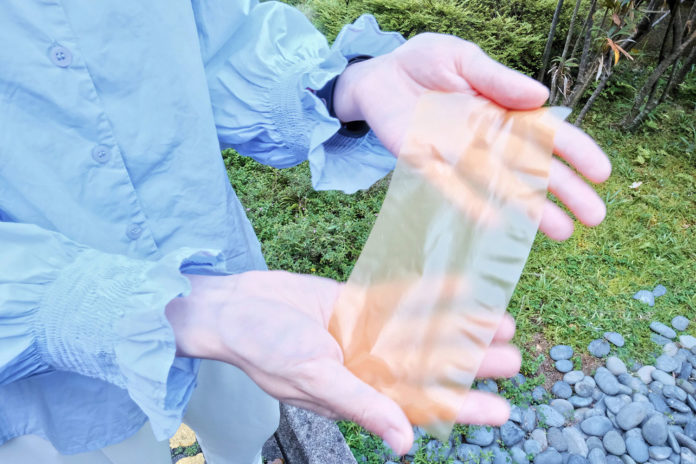In a world where deforestation directly leads to biodiversity loss, disrupts the water cycle, and alters rainfall, looking for alternatives to recycle or produce paper is more important than ever.
Scientists at Nanyang Technological University, Singapore (NTU Singapore) have developed a pollen-based paper that, after being printed, can be erased and reused multiple times without any damage to the paper.
The process of making pollen-based paper is similar to traditional soap-making, which is simpler and less energy-intensive. It begins with potassium hydroxide being used to remove the cellular components encapsulated in tough sunflower pollen grains, which are then turned into soft microgel particles.
Researchers then used deionized water to remove unwanted particles from the resulting pollen microgel, which is then poured into a flat mold and air-dried into a sheet that is about 0.03 mm in thickness or about half the thickness of the human hair. It is then treated with acetic acid to render it insensitive to moisture.
The resulting paper is a viable eco-friendly alternative to conventional wood pulp-based paper; it is more flexible and translucent. In tests, the team demonstrated how high-resolution color images could be printed on the non-allergenic pollen paper with a laser printer and then ‘unprinted’ – by completely removing the toner without damaging the paper – with an alkaline solution.
Swollen from the unprinting process, the now-blank paper is then placed in ethanol for five minutes to shrink the gel back to its previous state, which is then air-dried and treated with acetic acid. Now the paper is ready for printing again.
The process could be repeated up to at least eight times without any loss of the paper’s structural integrity or the quality of the printed images. This is an advantage over previous systems that require strong solvents or intense light, which further damage the paper over time. The new technique could also help to reduce the carbon emissions and energy usage associated with conventional paper recycling, which involves repulping, de-toning, and reconstruction.
The paper made from sunflower crops could also help reduce the felling of trees. Sunflower pollen is easily accessible. Apart from sunflower, pollen grains from other plants such as the lotus and camellia could also be used to make a paper-like material.
